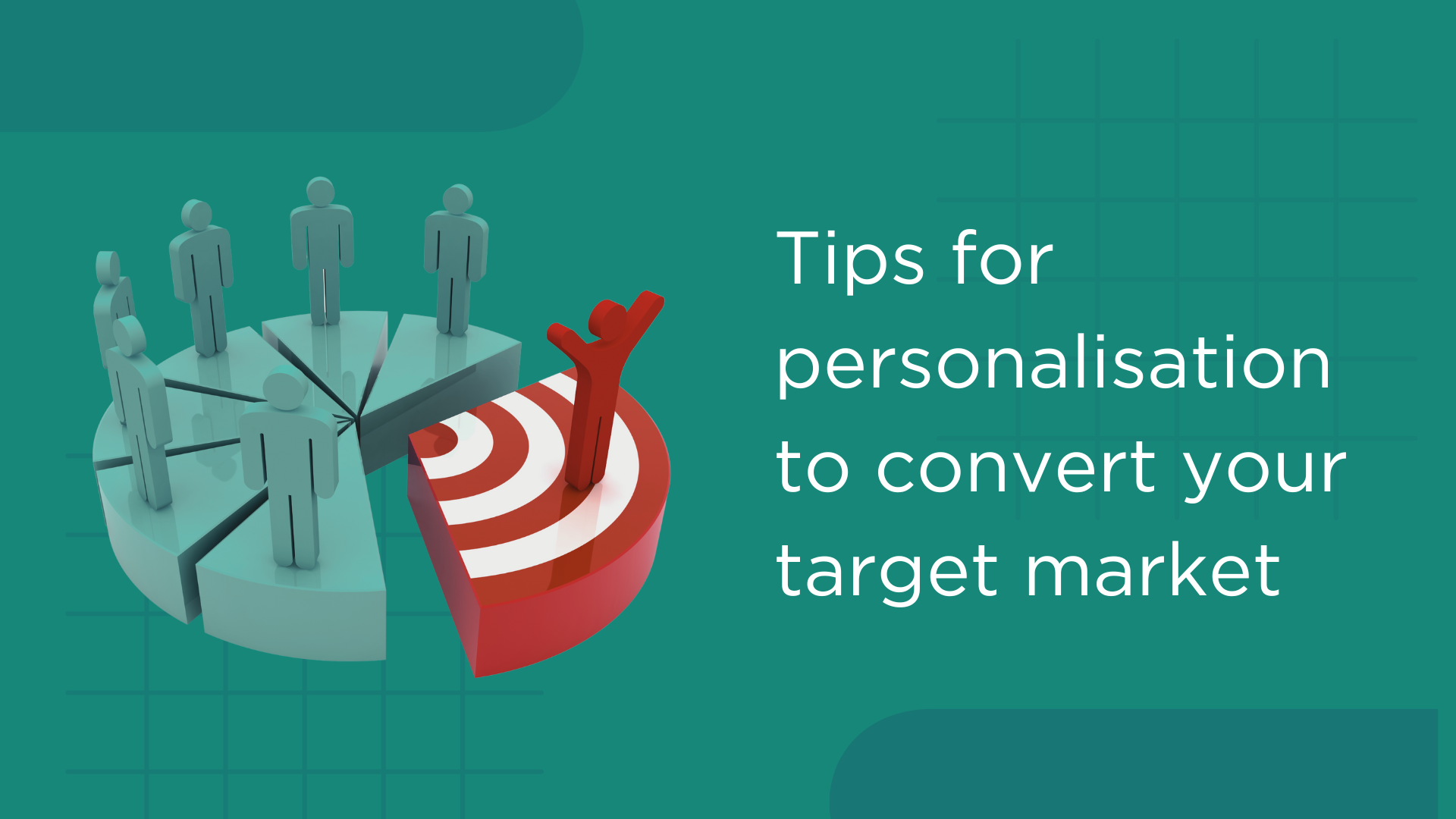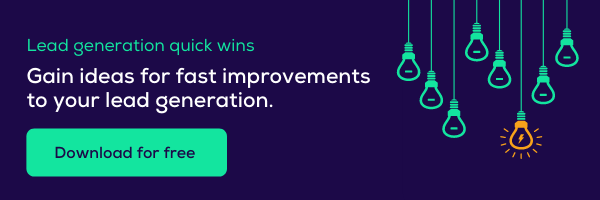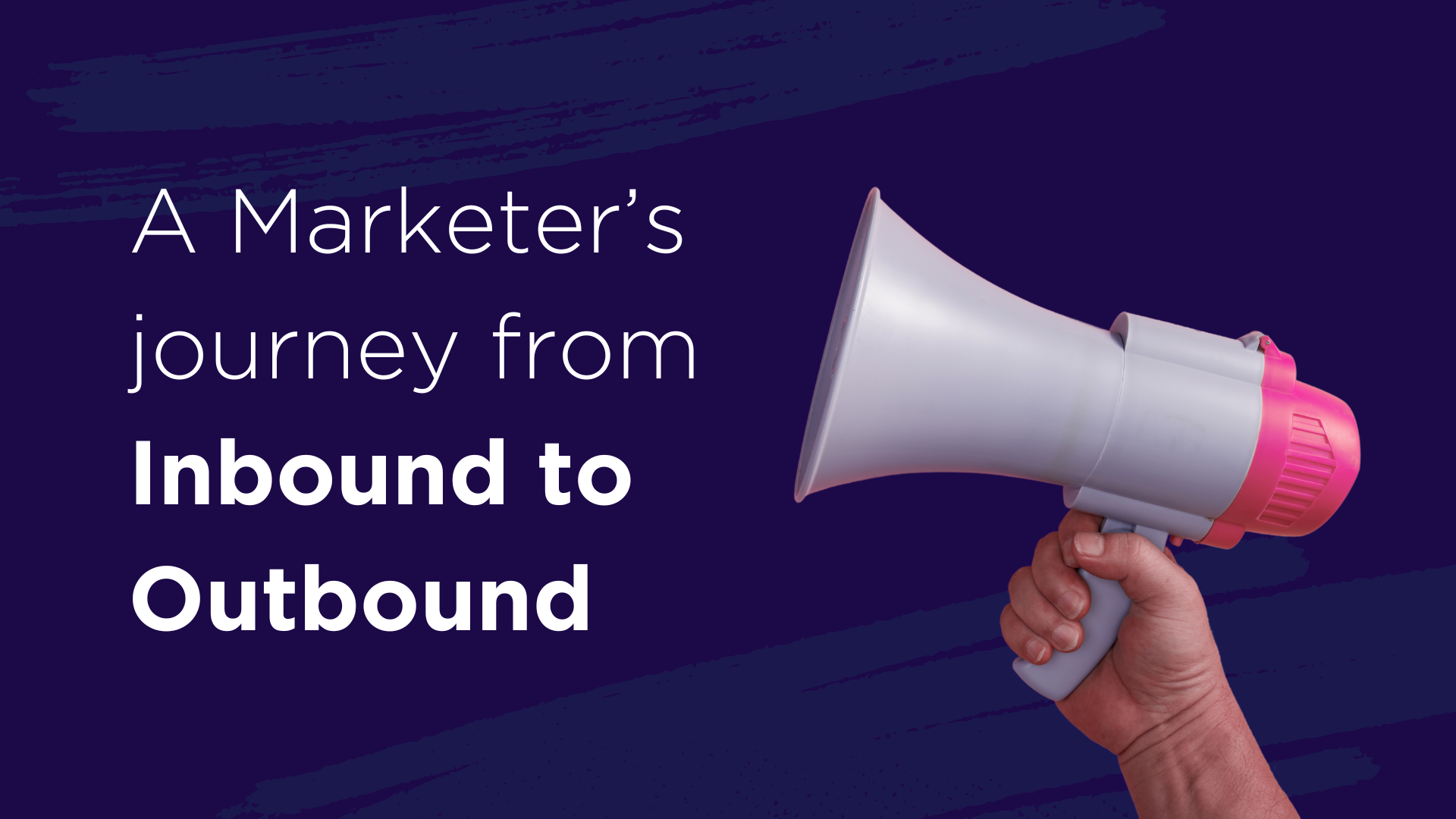First of all, what is personalisation in sales and marketing?
In a sales and marketing context, personalisation means using data and information to tailor your messaging for certain individuals or segments of buyers. Today, there are countless technologies and data available to help businesses like yours create tailored end-to-end buyer journeys, targeted experiences and personalised campaigns across channels.
Why is personalisation important?
It’s 2021. Our phones unlock using our faces, Jeff Bezos is shooting himself into space, and we’ve come to expect companies of all sizes to offer us the same personalisation we get from our Netflix accounts.
As human beings, we all like to feel important, so brands and businesses that make us feel this way are always going to be in our favour. If you don’t demonstrate that you understand who your customer is and what their needs are, they’re less likely to think you can give them what they want.
There have been some interesting stats about the benefits of personalisation in sales and marketing revealed over the past few years. Recent studies have revealed that 86% of consumers have said they expect salespeople to personalise their sales materials, and 77% have chosen, recommended or paid more for a brand that provides a personalised service or experience.
Is personalisation beneficial to b2b?
Absolutely. According to findings by Salesforce in its second annual State of the Connect Consumer report, almost 75% of business buyers expect vendors to personalise engagements to their needs. It’s also been found that 93% of b2b marketers that created personalised content in 2020 were able to increase their revenue over time.
In B2B marketing, you’re likely selling to high-level decision-makers who have individual needs, priorities and obligations. To stand out, grab their attention, and boost the likelihood of their conversion, you need to build relationships with these people — and you can do that through personalisation.
With that being said, what can you implement today to up your b2b personalisation game?
1. Send quick personalised videos on LinkedIn messages
If you really want to make a good first impression, ditch the sales pitch DM. Once you’ve connected with your prospect, send them a personalised video instead. I know what you’re thinking: ‘I don’t have time for that!’ but you do, you really do. It doesn’t have to be a beautifully shot masterpiece that you’ve spent all week recording and editing. Just pick up your phone and start recording on the go:
“Hey [first name], thanks for connecting with me! As a fellow [industry] person, I’m looking forward to following your insights on here. I’m just on my way to a meeting but I’d love to know what you thought of the [recent industry news report/latest industry tech/ new legislation etc.]?”
The whole point of LinkedIn is to start conversations, so start one! And do it in a personalised way they’d be too curious not to pay attention to. After all, everything you need to know about an individual from a business context is probably one click to their profile.
This approach will only take you as long as it would to type out your message, but engages the viewer on a more personal, ‘face-to-face’ style level, making them feel important. And who doesn’t appreciate feeling important?
2. Personalised proposals
Another interesting stat from Deloitte found that 82% say they appreciate it when deals and docs are personalised for them and their company.
Ever heard of Qwilr? Well until a few months ago, we hadn’t either. But in the short time we’ve been trying it, it has totally transformed our proposals from dry documentation to beautiful, engaging, and personalised experiences. Working like an expertly-designed webpage, these documents can be templated with added personalisation tokens, so whoever views it will see their name and company name:
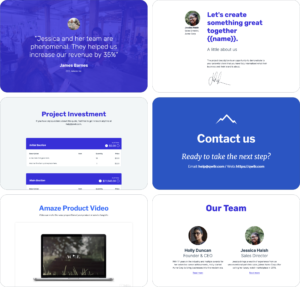
It’s definitely up there as one of those really simple things that can make a big difference.
3. Personalise pages and calls to action
Personalized homepage promotions influenced 85% of consumers to buy, and personalized calls to action convert 202% better than default or standard calls to action.
Through the magic of company IP tracking, you can create personalised forms which show your webpage visitor’s company name (if available). Here’s an example of what that might look like:
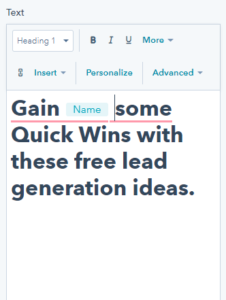
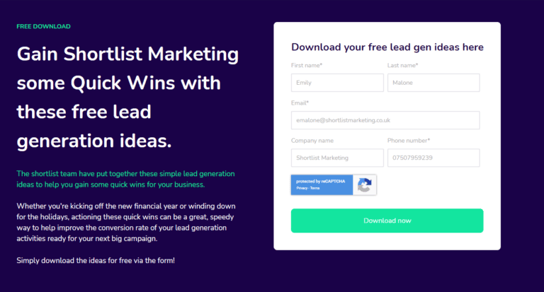
You can do this using HubSpot forms. If you’d like to learn more about how to do that, get in touch!
4. Suggested content
56% are more likely to return to a website that recommends products. And when customers receive transparent ads based on their activity on a site, the revenue of the product grows by 38%. A great way to do this is using HubSpot workflows that send visitors content related to pages they’ve visited on your site.
Another is setting up retargeting adverts to those who have previously been on your website. Just make sure you tailor that experience based on the pages they last visited. For example, if someone visited a certain product page, you may want to show them case studies using that specific product.
5. Send personalised emails from individuals
Campaign Monitor recently found that emails with personalized subject lines are 26% more likely to be opened. And that’s definitely something we’ve found, too! Reading your own name in a subject line appeals to our curious human nature.
Another tip is to make sure your email is being sent by an individual on your team, rather than your company’s default contact email. Personalisation goes beyond seeing your name on a screen, it’s also being contacted by a human being on a 1-1 level. Through HubSpot, you can send mass emails from individuals and add enticing personalisation tokens to subject lines; first names, industries, job titles, company names and more.
Finally, make sure your key message is right for each buyer persona segment you’re sending your emails to. For example, will a CTO respond to the same service benefits that you send to a CMO?
6. Remember every interaction
Through a CRM system like HubSpot, every interaction you have with a prospect is recorded on their record. That means if you’re catching up with a prospect after a few months of silence, nothing gets forgotten about; you can pick up right where you left off and gain that context to impress them with that personal touch.
Conclusion
While it has been harder for b2b companies to collect meaningful data, through technologies and platforms like Qwilr, HubSpot, and LinkedIn, personalisation can still be done effectively. Try these simple techniques both for leads trying to convert and for existing customers, and see the positive effect it has on not only the perception of your business but your pipeline, too.

